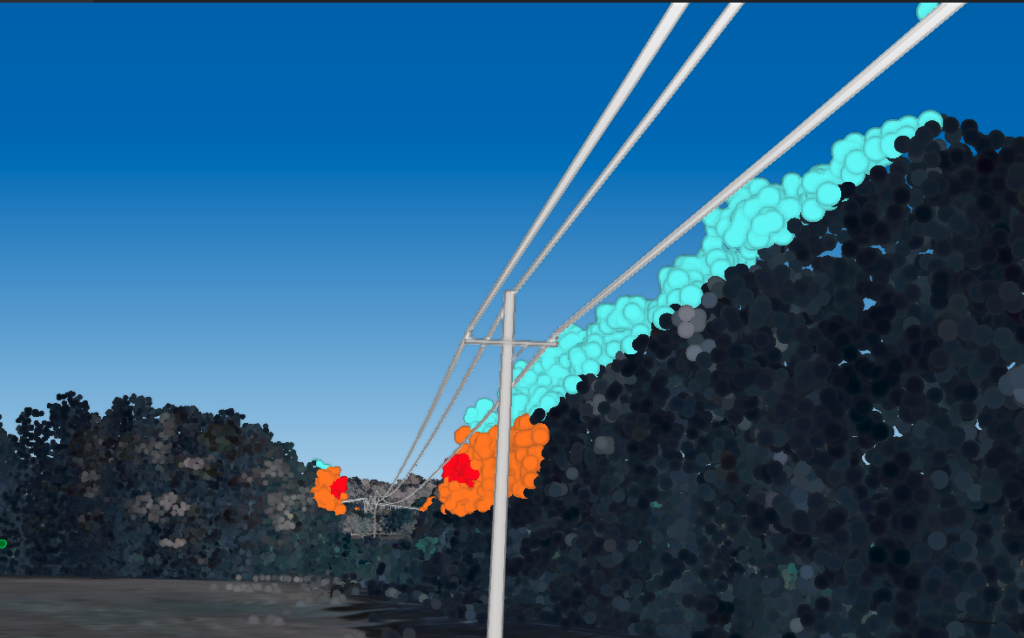
Case Study: Enhancing Grid Resiliency for a Large Texas Utility
Context
A large Texas utility, responsible for managing over 2.4 million poles, serves one of the fastest-growing regions in the U.S. and faces constant pressure to keep its grid resilient against extreme weather. High winds—regularly exceeding 40 mph and occasionally reaching 80 mph—are a leading cause of outages, often compounded by vegetation interference and aging components such as wood cross-arms.
At the same time, regulatory expectations have increased. In May 2024, the utility filed its first System Resiliency Plan with the Public Utility Commission of Texas (PUCT), a nearly $3B commitment over three years to modernize the grid, harden infrastructure, and improve reliability. To succeed, the utility needed more than incremental improvements—it required a fundamentally new way to model, analyze, and strengthen its network.
Problem
Despite extensive data collection through inspections, vegetation management, and outage reporting, the utility struggled to proactively mitigate risk due to fragmented and incomplete datasets. Much of the information—such as inspection history or outage logs—remained in paper records or siloed systems, making it difficult to trace root causes or prioritize interventions.
Severe wind events regularly caused infrastructure failures, from conductor clashing to snapped cross-arms and downed poles. Without reliable data on the age and condition of components, and without visibility into third-party attachments, the utility often relied on reactive fixes—replacing damaged assets like-for-like rather than designing long-term solutions.
The existing “early warning” system, while helpful for identifying outage hotspots, was limited to a one-way view of outages without feedback loops to confirm whether corrective actions were effective. This reactive, piecemeal approach left engineering, operations, and asset management teams under pressure to meet regulatory standards, contain costs, and maintain customer trust in the face of frequent weather-driven disruptions.
Solution & Outcome
To shift from reactive repairs to predictive resilience, the utility partnered with Neara to implement a physics-enabled digital twin of its entire network. Neara’s platform centralized critical datasets—including LiDAR scans, GIS records, vegetation data, outage histories, and Osmose field data—into a single, structurally accurate model capable of simulating how assets would behave under real-world stress conditions such as high winds, vegetation encroachment, and wildfire risk.
With this unified view, the utility rapidly conducted pole-loading analysis across all 2.4M poles, cutting costs and improving efficiency by more than 50%. The analysis highlighted at-risk structures, such as overloaded poles and vulnerable cross-arms, while providing new insight into conditions previously obscured by fragmented data. Neara’s integration with wildfire propagation models also strengthened the utility’s risk modeling, improving the quality of data used in regulatory submissions and capital planning.
Beyond structural analysis, Neara transformed how the utility manages and shares information. The digital twin replaced outdated paper-based records, providing a single source of truth that was both auditable and accessible across teams. Field crews could visualize risks in 3D—such as conductor slapping, vegetation threats, or compromised poles—and prioritize work orders with greater accuracy. For the first time, decision-makers could track whether mitigation efforts reduced outage risks, closing the loop between analysis, action, and outcomes.
The result is a utility better equipped to anticipate and withstand extreme weather events while meeting regulatory obligations. Neara’s solution has received strong internal endorsement from engineering, operations, and asset management teams, who now have confidence that their decisions are backed by physics-based modeling and defensible data.
Today, the utility is not only improving day-to-day operations but also advancing toward its long-term resiliency and modernization goals, demonstrating how proactive, predictive grid management can reduce costs, enhance reliability, and build greater trust with regulators and customers alike.